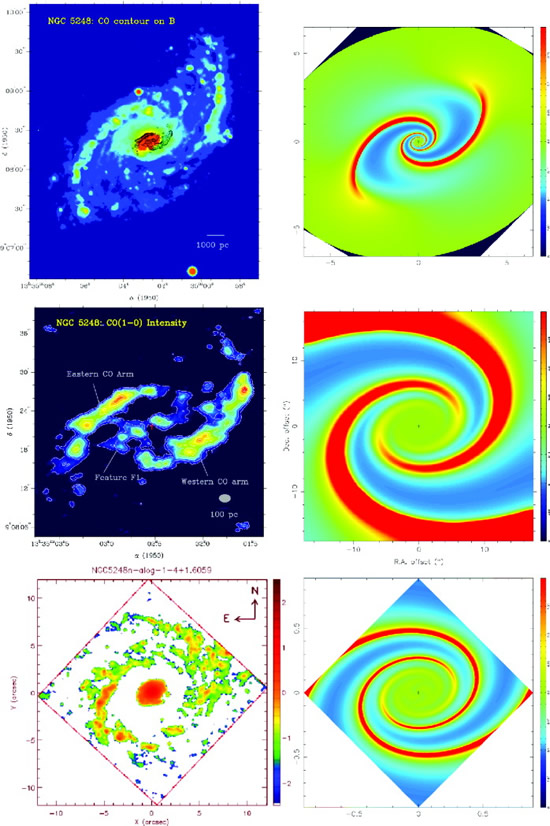On the Spiral Structure of NGC 5248: An Analytic Approach

Comparisons between the observational intensity maps and the model images calculated from our theory for the galaxy NGC 5248. The left panels, from top to bottom, are B-band, CO (1-0), and K-band observations, respectively, where the K-band map is from HST archival data analyzed by the wavelet method. The right panels are our calculations with the corresponding fields of view, after reversion, projection, and reorientation of the original. The top panels indicate a field of view of 175" (13 kpc), the middle 35" (2.6 kpc), and the bottom 24" (1.8 kpc). The middle right panel has been convolved with the 1.9" x 1.4" synthesized beam shown in the middle left panel.
An improved nonlinear asymptotic theory of spiral density waves is developed. It extends the theory developed by Yuan & Kuo to a global theory, not just one limited to the vicinity of the resonance. It can then be applied to the recent high-resolution observations of CO and HST NICMOS of nearby spiral galaxies. As an example, we apply the theory to the nearby grand-design spiral galaxy NGC 5248, which has excellent CO observations in the central regions and exhibits a continuous optical spiral pattern from about 7 kpc to about 100 pc. Using the improved nonlinear asymptotic theory, we confirm the earlier results that the inner two-arm spiral structure of NGC 5248 is driven by a slowly rotating bar potential at the outer inner Lindblad resonance and is a continuation of the outer optical spiral arms. Using the new theory, we calculate the streamlines, surface density, and line-of-sight velocity contours of the bar-driven flow in the central gas disk, and these results are in good agreement with the observations. (Yuan, Chi, & Yang, Chao-Chin 2006, ApJ, 644, 180)